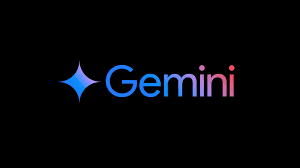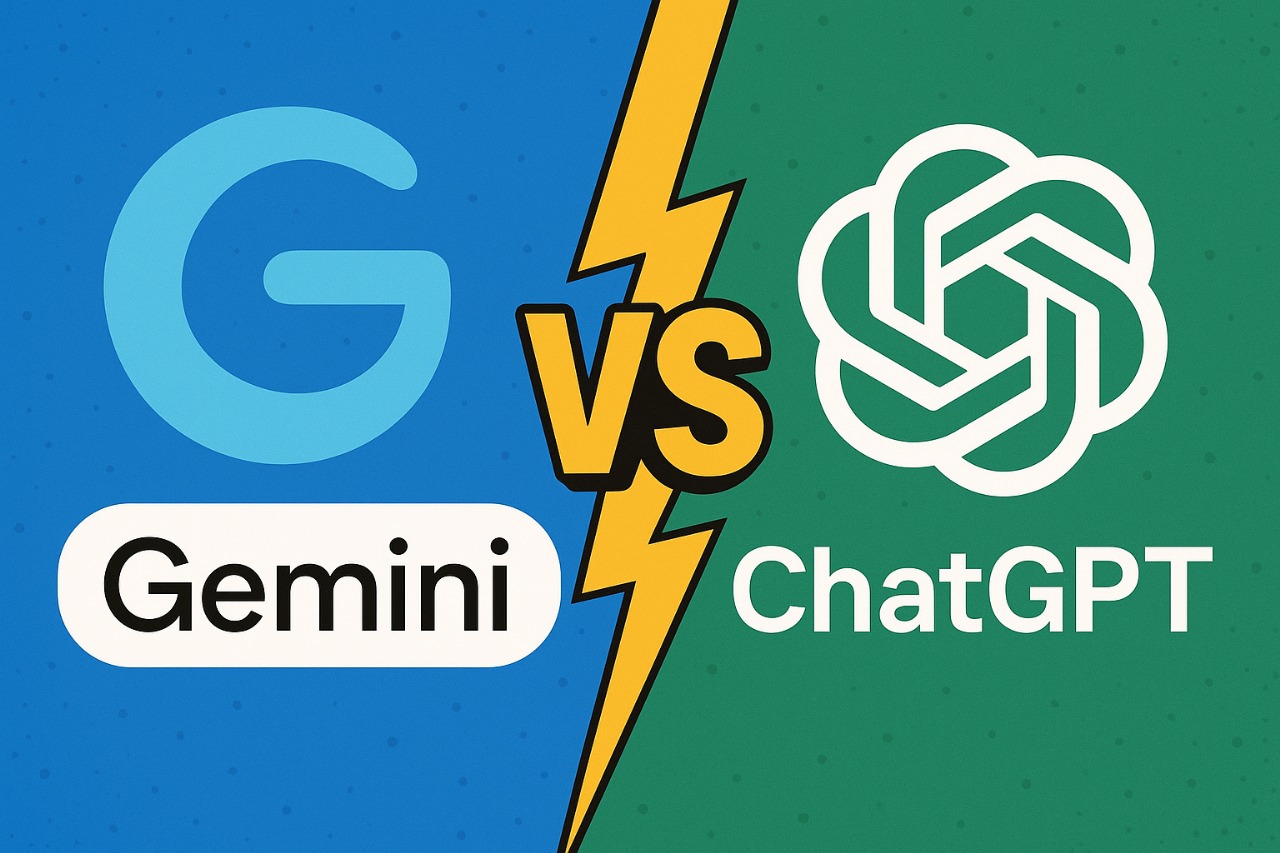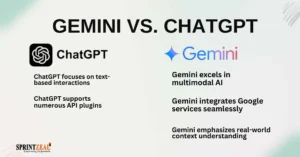Introduction: Gemini vs ChatGPT 4o – Who’s Leading the AI Revolution?
In 2025, the race between OpenAI’s ChatGPT 4o and Google DeepMind’s Gemini isn’t just a tech showdown—it’s the defining battle for the future of artificial intelligence. These two giants aren’t merely building chatbots; they’re shaping how we code, communicate, create, learn, and even think. With AI moving from niche applications into the core of our daily digital lives, the stakes have never been higher.
Once thought of as futuristic tools for researchers and developers, today’s AI models are rapidly becoming co-pilots in everything from education and customer support to content creation and enterprise automation. At the heart of this transformation are ChatGPT 4o, OpenAI’s flagship multimodal model, and Gemini, Google’s increasingly capable and adaptive AI ecosystem.
So, which one is really leading the charge in 2025? Let’s break it down.
The Battle Lines: Who Are These Models For?
ChatGPT 4o is the refined result of OpenAI’s years of experimentation, culminating in a model that’s not only faster and more powerful than its predecessors, but also multimodal—capable of understanding and generating text, audio, vision, and code in real time. With integration into OpenAI’s desktop app and growing API ecosystem, ChatGPT 4o is positioned as a flexible tool for professionals, creators, and general users alike.
Gemini, developed by Google DeepMind, is no slouch either. While it began as a family of language models under the Bard brand, Gemini has matured into a more robust ecosystem spanning Gemini 1.5, Gemini Nano (for Android devices), and deeper integration with Google Workspace tools. Its tight relationship with Google Search, Gmail, Docs, and YouTube makes it a compelling choice for users already embedded in the Googleverse.
Where ChatGPT 4o emphasizes conversational fluidity, multi-device workflows, and open access through APIs, Gemini plays the long game—embedding itself into your everyday habits without friction.
Multimodality: Who Does More, Faster?
Both ChatGPT 4o and Gemini support multimodal inputs and outputs, but the approach differs slightly.
ChatGPT 4o leads with its native multimodality. Users can upload PDFs, images, charts, or code files and ask the AI to summarize, analyze, or debug them in seconds. It can generate audio responses in a natural voice, recognize visual inputs in real-time, and even offer interactive UI experiences via plugins and custom GPTs. The “o” in 4o stands for “omni”, and it’s not just marketing fluff—it truly represents the all-in-one nature of this model.
Meanwhile, Gemini is no longer lagging. With Gemini 1.5 Pro, Google has introduced long context windows (over 1 million tokens in some demos), giving it an advantage for tasks involving large volumes of information like legal documents, novels, or research archives. Gemini’s visual capabilities are deeply tied into Google Lens and Photos, and its code analysis benefits from Google’s engineering-grade datasets.
In summary: ChatGPT 4o wins on user-facing creativity and real-time interactivity, while Gemini shines in long-context processing and Google-native environments.
Real-World Use: AI That Feels Like a Partner
What does using these models actually feel like?
With ChatGPT 4o, the experience is surprisingly human. You can speak to it—literally—and it responds with tone, emotion, and pace that mimic natural human speech. Need to convert a spreadsheet into a chart, write a cold email, or debug a code snippet? ChatGPT handles it smoothly. Its desktop app behaves almost like an AI operating system—drag-and-drop content, summarize meetings, generate visuals, and more.
Gemini, on the other hand, feels like an invisible assistant woven into your digital life. It autocompletes emails, drafts Google Docs, recommends edits in Slides, and quietly suggests actions in Gmail. While it might not dazzle with chat interfaces as much as ChatGPT 4o, its seamless integration across Google’s ecosystem gives it a frictionless superpower. Gemini doesn’t demand your attention—it’s just always there.
AI for Developers: The Code War
In the world of developers, the comparison gets even more interesting.
ChatGPT 4o comes with excellent coding support out-of-the-box. It’s able to write, explain, debug, and refactor code in over a dozen languages, often generating explanations that rival seasoned developers. The Code Interpreter (a.k.a. Advanced Data Analysis) tool allows users to run code within the chat itself, perfect for data science workflows.
Google’s Gemini Pro, however, taps into Google’s massive codebases and infrastructure. Its performance in competitive coding and real-time suggestions in IDEs like Android Studio or Colab makes it ideal for developers working on larger-scale systems or Android apps. It also pairs well with Google’s own AI-powered code tool: Project IDX.
So who wins here? ChatGPT 4o is better for generalist developers and creative coding tasks, while Gemini is superior for infrastructure-heavy or Android-specific workflows.
Creativity & Content: From Prompt to Post
When it comes to content creation, ChatGPT 4o has become the go-to assistant for bloggers, marketers, educators, and creatives.
With voice generation, image understanding, and plugin-powered workflows, it enables entire blogs, email campaigns, or learning modules to be drafted and refined within minutes. Custom GPTs allow users to build specialized content generators for tone, topic, or audience—no coding required.
Gemini supports creative work too, but leans toward assistive refinement over from-scratch generation. It’s great for suggesting better phrases in Gmail or summarizing Google Docs, but it’s not as flexible when you need to generate 100 social media captions in different tones or create a video script from scratch.
Result: ChatGPT 4o is the creative’s powerhouse; Gemini is the professional’s behind-the-scenes editor.
Ecosystem and Extensibility
The ecosystems around these AIs are rapidly expanding.
-
ChatGPT 4o offers Custom GPTs, plug-ins, a desktop app, and upcoming native OS integrations. With OpenAI’s API, startups and enterprises can embed ChatGPT into their own apps, UIs, or workflows.
-
Gemini is already embedded into Android phones (Pixel series), Chrome, Google Workspace, and even YouTube summaries. It’s an always-on copilot for the Google ecosystem—and increasingly, for Android app development and Chrome extensions.
Both platforms are moving toward AI agents—autonomous, goal-driven AI systems that can complete complex tasks across apps. ChatGPT’s memory is already learning your preferences. Gemini’s integration with Google Assistant is slowly turning it into a full-time personal AI.
The Future: Who’s Winning?
So, who’s truly leading the AI revolution in 2025?
The answer depends on who you are and what you need.
-
If you’re a creator, developer, teacher, or solo business owner looking for a flexible, hands-on, intuitive AI that feels like a real teammate—ChatGPT 4o likely gives you more power, creativity, and control.
-
If you live in Google’s ecosystem—using Gmail, Docs, Android, and YouTube daily—and want an assistant that feels native and helps you quietly behind the scenes—Gemini is the smarter companion.
But in the broader picture, this isn’t a zero-sum game. Both models are pushing AI forward in different, meaningful ways. And for the rest of us? That competition is a win.
How AI models are Transforming…
AI models like ChatGPT and Gemini are rapidly transforming the digital landscape, dominating sectors from customer service to content creation. Their ability to generate human-like text, automate tasks, and analyze vast data in real-time is making them indispensable for businesses. Companies are integrating these AIs to cut costs, boost efficiency, and improve user experiences. With constant advancements in reasoning, coding, and multimodal capabilities, they’re replacing traditional tools and even some human roles. As a result, tech giants are in fierce competition, investing heavily in generative AI, signaling a future where AI-driven solutions become the new standard across industries.
2. Introduction to ChatGPT 4o
Released in May 2024, GPT‑4o (“o” for “omni”) is OpenAI’s flagship multimodal model, capable of handling text, image, audio, and video—all in real time easemate.ai+2Vox+2Tom’s Guide+2Wikipedia+1easemate.ai+1. Integrated in ChatGPT Plus and API, it supports Advanced Voice Mode, native image generation, and zero-latency responses. Its improvements in speed, cost, and versatility made ChatGPT 4o the de facto AI “Swiss Army knife” for millions worldwide.
3. Introduction to Gemini

Google’s Gemini debuted December 2023 as the successor to LaMDA and PaLM 2. It’s a multimodal model family with Nano, Pro, Ultra, and Flash variants WikipediaWikipedia+1Wikipedia+1. In March–June 2025, Gemini 2.5 Flash and Pro launched—with Deep Think reasoning, audio output, and automatic scheduled actions inside Google Workspace TechRadar+6Wikipedia+6Wikipedia+6—positioning Gemini as a proactive tasks assistant.
4. Background & Features Comparison:
Both excel at multimodality, but differ in context handling, reasoning, and performance. Gemini 1.5 Pro handles up to 1 million tokens, ideal for large documents; GPT‑4o offers 128k tokens arXiv+15easemate.ai+15Fluent Support+15. GPT‑4o dominates in benchmarks: MMLU (88.7 vs 81.9), code generation (90.2 vs 82.6), math, and reasoning easemate.ai+1Wikipedia+1. Gemini matches GPT‑4o in translation tasks and costs just ~$2 vs $15/1M output tokens on GPT‑4o TechRadar. Overall: Gemini wins on document size and price; ChatGPT leads in deeper reasoning.
5. CEOs, Tech & Design Teams Comparison:
OpenAI—led by Sam Altman with Mira Murati as CTO—puts strong emphasis on product experience via clean UI, plugin ecosystem, and secure API. Google DeepMind—co-founded by Demis Hassabis and with Pichai championing Gemini—leverages Google’s product engineering teams. Their design focus is embedding AI into workflows: Gmail, Docs, Search, Workspace. OpenAI prioritizes user creativity and speed; Gemini pushes assistant integration and context-aware actions.
6. What Internet Says: Insta, Facebook, X, Reddit
On Reddit, r/ChatGPTPro debates the social impact of users preferring ChatGPT conversations over humans Wikipedia+14Fluent Support+14easemate.ai+14Reddit; others praise Google’s AI for redefining Search and task automation through AI phone calls and Deep Search modes Android Central+1Tom’s Guide+1. On Facebook, ChatGPT still dominates traffic with 5.2 billion visits, while Google’s AI accounts for ~13% market share and ~42 million users per neontri/Neontri stats Neontri+1Facebook+1. Instagram trends lean on stylized outputs from ChatGPT 4.5 vs Gemini 2.5.
7. People’s Opinion & Who’s Dominating
Public feedback splits along use cases : for coding, creative writing, image generation, GPT‑4o is often praised; for translations, research summaries, and integration, Gemini wins. Fluent Support notes “It has stronger research and technical accuracy, while ChatGPT helps you in creative tasks and building human-like conversations” VoxFluent Support. G2 reports GPT‑4o is faster at real‑time debugging; whereas It excels in Google ecosystem tasks learn.g2.com.
8. Which is Better at What?
Here’s a quick breakdown:
-
Coding/debugging → GPT‑4o (90%+ code benchmarks) easemate.ailearn.g2.com
-
Creative assets → GPT‑4o (image & voice generation) arXiv+8Vox+8Wikipedia+8
-
Long-form docs / books → startupgtm.substack.com+4easemate.ai+4TechRadar+4
-
Translation → TechRadareasemate.ai
-
Automation & agentic tasks →)Wikipedia+2Android Central+2Tom’s Guide+2
-
for last three gemini is better
9. New Insights Found Online….
Recent news highlights: OpenAI’s new ChatGPT Agents enable autonomous actions—browsing, executing code, managing real-world tasks—with third-party service integration (Gmail, GitHub) Tom’s Guide. In contrast, Google’s AI Search Mode also performs real-world tasks—deep searches, booking calls, pulling pricing info—with Pro/Ultra tiers Tom’s Guide+2Android Central+2Vox+2. Another glaring issue: “AI Overviews” have hallucination errors (1.3–1.8%) and harmful suggestions like “add glue to pizza sauce” nypost.com. Trust remains a concern.
10. More Internet Findings
Business Insider uncovered that Google used ChatGPT’s outputs to benchmark Bard (now Gemini) during internal improvements, as part of “Project Bulba” Business Insider. This shows how tightly the competitors are intertwined: ChatGPT not only competes but helped train Gemini. Also, Tom’s Guide suggests GPT‑5 is expected mid‑2025, raising the bar higher Tom’s Guide. This competition fuels rapid innovation, but also user confusion over evolving capabilities.
11. Final Verdict & My Opinion on Gemini vs ChatGPT 4o
Choosing between ChatGPT 4o and Gemini depends on your priorities. For creative, coding, and real-time multimodal tasks, GPT‑4o shines—its speed, depth, and content richness still lead. For large document processing, affordable translations, and building into the Google stack, Gemini is powerful and cost‑effective. Eventually, expect fusion: GPT‑5 + Gemini 3. Either way, users win with diverse, capable tools—just know what you need. Personally, I use GPT‑4o for ideation and coding, and Gemini for research papers, batch translations, or managing workflows via Workspace so in the race of Gemini vs ChatGPT 4o nobody wins because they both are good in different different fields .
About ModernTimeX
In today’s fast-moving digital world, technology doesn’t wait for anyone. But understanding it? That’s where we come in.
Welcome to ModernTimeX—your trusted destination for demystifying technology, decoding innovation, and delivering the future in practical, human language. We’re not just another tech publication. We’re your guide to mastering modern tools, optimizing digital workflows, and staying ahead in a rapidly evolving landscape where AI, automation, and intelligent systems are rewriting the rules of work and creativity.
Why We Exist
At ModernTimeX, our mission is simple yet bold: Make modern technology approachable, actionable, and empowering.
We believe that you shouldn’t need a computer science degree to understand AI. You shouldn’t have to scroll through dozens of forums just to figure out which productivity tool is worth your time. Whether you’re a designer trying to automate your Figma workflow, a small business owner overwhelmed by the latest SaaS options, or a student exploring AI-assisted research tools, we create content for you.
We publish in-depth tutorials, side-by-side tool comparisons, trend breakdowns, and hands-on reviews designed to help you make informed decisions—not just keep up, but level up.
Our readers are doers. Professionals. Creators. Learners. Hustlers. Innovators. Curious minds. And we serve them with the kind of content that respects their time and meets their ambition.
What We Cover
Technology isn’t one-dimensional, and neither is our coverage. At ModernTimeX, we focus on five core verticals that reflect the needs and interests of modern users:
🧠 Artificial Intelligence & Automation
We unpack the most important developments in AI—from ChatGPT and Gemini to open-source alternatives, from AI art generators to real-world applications in business, education, and design. Expect explainers, use-case deep dives, and comparisons of LLMs and multimodal tools.
🛠 Productivity Tools & Workflow Hacks
From Notion to Obsidian, Airtable to Trello, and everything in between—ModernTimeX is obsessed with systems that help you work smarter. We test tools so you don’t have to, showing real-world setups and automation blueprints.
📸 Creator Tech & Content Tools
Cameras, microphones, editing apps, AI video generators, caption tools—we explore and review the entire creator stack. Whether you’re a YouTuber, podcaster, or solo content creator, you’ll find value here.
💼 Tech for Business, Startups, and Solopreneurs
Small teams and indie founders are building empires—and we’re right there with them. We break down CRM options, help you pick the right AI customer service assistant, and review everything from email tools to invoice apps.
🕹️ Digital Culture & Trends
We don’t just report what’s happening—we explain why it matters. From the metaverse to Gen Z startup culture, from ethical AI debates to viral design aesthetics, we translate trends into takeaways.
Meet the Minds Behind ModernTimeX
Every digital platform reflects its people. At ModernTimeX, our small but mighty team brings diverse strengths and a shared obsession with clarity, creativity, and curiosity.
🔍 Abhay – The Strategist
Abhay is the brain behind the blueprint. With a background in tech consulting and a passion for precision, he ensures that every piece of content has a purpose. He lives by the mantra “less noise, more signal” and leads our editorial strategy with a sharp eye for what truly matters. From crafting series on emerging SaaS tools to guiding our content roadmap, Abhay makes sure we don’t just create content—we create value.
✍️ Ayan – The Storyteller
Ayan brings soul to the silicon. A journalist turned tech writer, he transforms cold specs into warm stories. His pieces read like personal letters with data backing them. Whether he’s narrating a 30-day challenge of quitting sugar with the help of biohacking apps or profiling a startup using AI to fight climate change, Ayan makes you feel the pulse behind the pixels.
🤖 Tauheed – The Tech Whisperer
If it’s new, Tauheed’s already using it. If it’s obscure, he’s probably building something with it. With a hacker mindset and deep curiosity, Tauheed is our go-to for breaking down the bleeding edge—from spatial computing to GPT-5 jailbreaks. He lives and breathes AI, machine learning, APIs, and experimental workflows—and brings that firsthand experience into our most technical content.
Together, we balance vision with execution, logic with storytelling, and passion with performance.
How We Work
We’re not a corporate blog. We’re not chasing pageviews with clickbait. Every ModernTimeX article follows a careful content design process:
-
Identify real user pain points. What are people actually searching for? What do they need help with?
-
Do the work. We test tools ourselves. We interview creators. We document workflows. No lazy summaries.
-
Explain it clearly. We write for smart people who don’t want to be patronized or overwhelmed.
-
Design for impact. Our visuals, screenshots, diagrams, and tables make content skimmable yet deep.
You’ll notice that our content often includes real screenshots, before-after demos, pros & cons breakdowns, and pricing calculators—because we want you to act on what you read.
What Makes Us Different
-
We focus on what’s next.
AI and tech are evolving daily. We don’t just react—we anticipate. Our “What’s Coming” section explores future launches, leaks, and patents with thoughtful analysis. -
We’re tool-agnostic, user-centric.
We don’t push affiliate links or sell you what you don’t need. Our loyalty is to the reader. If a free open-source tool beats a $99/month one, we’ll say so. -
We talk like humans.
You’ll never see walls of jargon or AI-written fluff. Every word is written by someone who cares about clarity and connection. -
We make tech personal.
A lot of our blogs start with stories—about someone trying to fix a workflow, understand a leak, or test a tool. That human-first perspective makes our content memorable. -
We update regularly.
Tools change. Features get added or removed. We revisit old reviews and update them when the landscape shifts.
A Few Examples of Our Popular Content
-
“Quit Sugar for 30 Days. My Brain and Skin Thanked Me.”
A personal health-tech experiment with Glucose trackers, journaling tools, and mood tracking via AI. -
“Best AI Tools for Solopreneurs in 2025 (Ranked by Use Case)”
A mega-guide comparing 22 AI tools by cost, features, integration, and value for freelancers. -
“What ChatGPT 5.0 Actually Means for Creators”
A feature breaking down the shift to multimodal creation, API access, and niche micro-models. -
“Notion vs. Obsidian in 2025: Who Wins?”
A side-by-side comparison for people torn between all-in-one productivity vs. local-first customization. -
“How One Indie Developer Built a ₹3 Cr Tool Using GPT APIs”
A real story of ambition, execution, and no-code + AI.
For the Curious, the Brave, the Builders
We know the internet is overflowing with information. But it’s missing clarity. And that’s where we come in.
ModernTimeX is for:
-
The designer automating Figma plugins via GPT-4
-
The college student using AI to break into data science
-
The founder testing 5 CRMs before choosing one
-
The content creator optimizing reels with AI captions
-
The curious human who just wants to understand what’s coming
If you’re hungry to learn, eager to build, or just looking for honest reviews, you’re one of us.
What’s Next for ModernTimeX?
We’re evolving fast—just like the tech we cover. In 2025, you can expect:
-
Video tutorials on workflow automation and AI prompts
-
Newsletter exclusives featuring handpicked tools every week
-
Live sessions with creators and indie founders using cutting-edge systems
-
Downloadable blueprints and workflows you can copy and adapt
-
Community features where our readers contribute tips and tutorials
We’re not building a tech media site. We’re building a movement of empowered users—tech-savvy, tool-smart, future-ready.
Stay Connected
🔗 Visit us weekly at ModernTimeX.com
📩 Subscribe to our newsletter for AI updates, new tool drops, and workflow templates
📱 Follow us on Instagram, Twitter, and LinkedIn for daily insights
🎥 Coming soon: Our YouTube channel with tutorials, reviews, and opinion pieces
Final Word
ModernTimeX is more than a publication. It’s a philosophy.
We believe the tools of tomorrow should be in everyone’s hands today. Whether you want to optimize your day, automate your work, build your brand, or just stay curious—we’ll help you do it smarter.
Welcome to the future.
Let’s master it—together.







